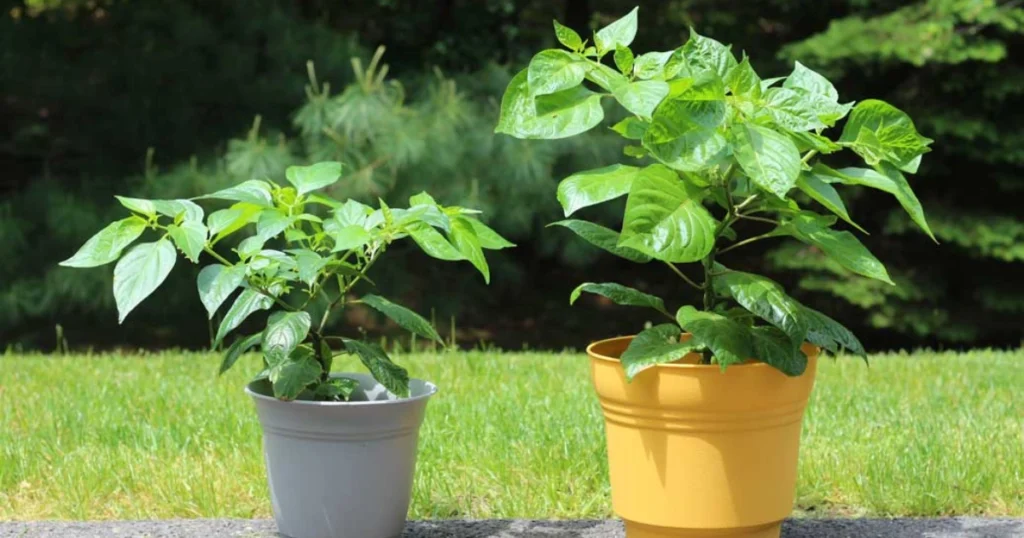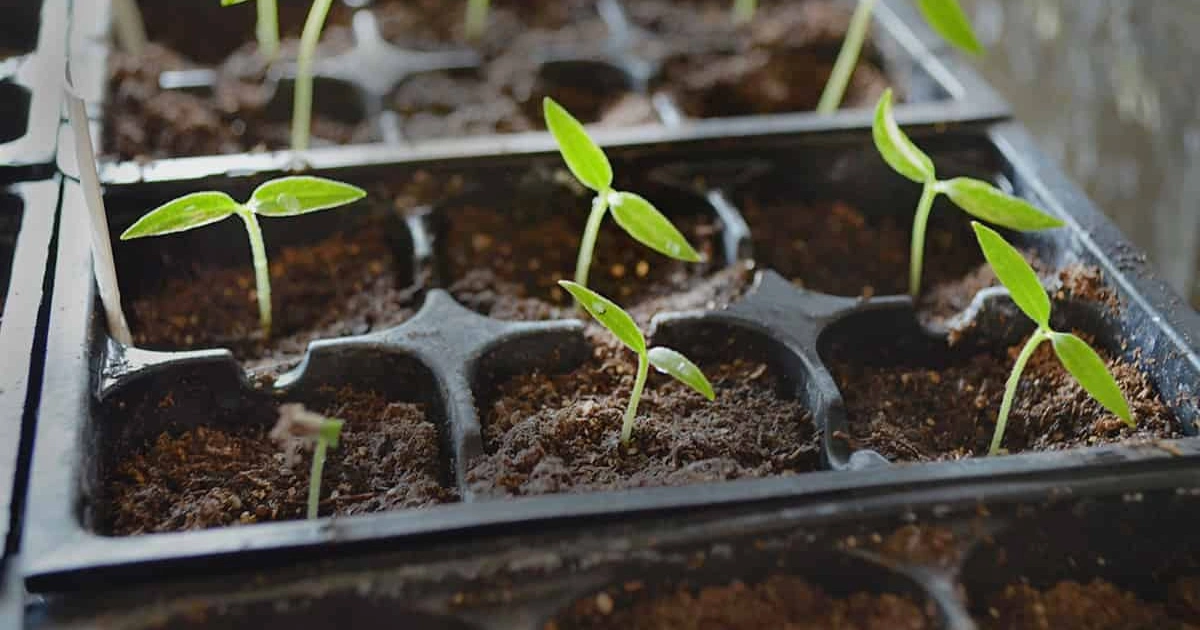Starting your pepper plants off right is the foundation for a bountiful harvest. If you want vibrant, high-yield pepper crops, the secret lies in nurturing healthy seedlings from the beginning. In this guide, you’ll discover a simple yet powerful method to develop strong root systems that support vigorous plant growth all season long.

Why Root Strength Matters for Pepper Plants
A strong root system is essential for pepper plants to absorb nutrients, resist environmental stress, and produce abundant fruit. When seedlings are confined to small containers for too long, their roots become restricted, limiting growth potential.
To prevent this, it’s important to:
- Start seedlings in appropriately sized containers
- Transplant them as soon as roots begin to outgrow the space
- Use nutrient strategies that promote rapid root development
Lighting: The Unsung Hero of Healthy Seedlings
Lighting is often overlooked by new gardeners, but it plays a crucial role in seedling health. Without sufficient light, pepper seedlings become leggy and weak.
Here’s how to ensure optimal light exposure:
- Place seedlings in a bright, sunny window for 6–8 hours daily
- Use LED grow lights if natural sunlight is limited
- Keep lights close to the plants (but not touching) to prevent stretching
Proper lighting supports compact, robust seedlings with strong stems and lush leaves.
DIY Root-Boosting Fertilizer for Seedlings
To encourage deep, healthy root growth, a simple and affordable fertilizer mix can be prepared at home using just two main ingredients. This natural blend provides targeted nutrients that enhance early-stage plant development.
Ingredients:
- Mono Potassium Phosphate (KH₂PO₄): A key source of phosphorus and potassium—both vital for root formation and overall vigor.
- Succinic Acid: An organic compound that improves nutrient uptake and stimulates plant metabolism.
How to Prepare the Fertilizer Solution:
- Dissolve 1 gram of Mono Potassium Phosphate in 1 liter of dechlorinated, room-temperature water. (Let tap water sit out for 24 hours if necessary.)
- Add 0.2 grams of Succinic Acid (powder or tablet form) to the mix.
- Stir well until fully dissolved.
This simple solution mimics what commercial root boosters do—at a fraction of the cost.
How to Apply the Solution
- When to start: Begin using the solution a few days after transplanting to avoid overwhelming tender roots.
- How to apply: Use a watering can or syringe to gently saturate the root zone without flooding the soil.
- Frequency: Apply every 2 to 3 days, repeating up to 3 times during the early growth period. Alternate with a balanced organic fertilizer for complete nourishment.
Transplanting Tips to Maximize Root Expansion
Every time your pepper seedling outgrows its container, the roots need more space to grow. Transplanting is not just about size—it’s a vital part of stimulating further root development.
Here’s how to do it right:
- Choose pots that are 2–3 inches wider with good drainage
- Handle the roots gently to avoid damage
- Bury the stem slightly deeper to encourage more root growth along the stem
- Water thoroughly after transplanting
Transplanting reduces stress and ensures your peppers continue growing at full strength.
Additional Tips for Strong Pepper Plants
- Airflow matters: Good ventilation prevents disease and toughens the stems.
- Soil quality: Use a well-draining mix with compost or coconut coir for moisture balance.
- Monitor closely: If seedlings look pale, leggy, or wilted, adjust light, nutrients, or watering schedule immediately.
A little observation goes a long way in catching issues early.
FAQs About Growing Pepper Seedlings
What is the best fertilizer for pepper seedlings?
A phosphorus-rich fertilizer like Mono Potassium Phosphate combined with succinic acid supports root growth and early plant development. Balanced organic fertilizers can be used once the plants are more established.
How much light do pepper seedlings need?
Pepper seedlings require at least 6–8 hours of direct sunlight or equivalent artificial lighting per day. Without sufficient light, they may become spindly and weak.
How often should I water pepper seedlings?
Water only when the top 1–2 inches of soil feels dry. Overwatering can cause root rot, while underwatering leads to slow growth.
Can I grow peppers indoors year-round?
Yes, peppers can be grown indoors with consistent lighting and temperature control. However, pollination may require manual assistance in the absence of natural pollinators.
When should I transplant pepper seedlings?
Transplant when the seedlings have at least two sets of true leaves and roots begin to appear at the bottom of the container. This usually happens around 3–4 weeks after germination.
Related Articles from secretsofthegreengarden.com
- Top 10 Heat-Tolerant Vegetables for Summer Growing
- How to Start a Balcony Vegetable Garden
- Organic Liquid Fertilizer: How to Make Your Own
Recommended External Resources
- University of California Master Gardener Program – Peppers Guide
- The Old Farmer’s Almanac – Growing Peppers
- Royal Horticultural Society – Pepper Cultivation Tips
Summary for SEO:
- Main keyword: grow strong pepper plants
- LSI/NLP keywords used: pepper seedlings, transplanting peppers, root booster, pepper fertilizer, phosphorus for roots, succinic acid gardening, seedling care, indoor pepper growing
- Internal link suggestions from secretsofthegreengarden.com:
- Top 10 Heat-Tolerant Vegetables for Summer Growing
- How to Start a Balcony Vegetable Garden
- Organic Liquid Fertilizer: How to Make Your Own
- External link suggestions:


xz7a5s
l6hsoa
**mind vault**
mind vault is a premium cognitive support formula created for adults 45+. It’s thoughtfully designed to help maintain clear thinking
برای دوستانی که به دنبال یک راهکار مطمئن برای وریفای حساب در بروکرهای فارکس هستند، پیشنهاد میکنم خدمات شوپی را بررسی کنند. این مجموعه به صورت تخصصی، وریفای قانونی حساب های فارکس را با مدارکی ارائه میدهد که کاملاً معتبر بوده و به نام خودتان صادر میشود. این روش دائمی است و ریسک بلاک شدن حساب شما را به صفر میرساند. کیفیت و پشتیبانیشان واقعاً عالی است.
من از گرافیسو دو سفارش داشتم؛ یکی فایل و یکی نسخه فیزیکی گواهینامه رانندگی کانادا. هر دو با دقت بالا طراحی شده بودن. اگر بهدنبال گواهینامه رانندگی واقعی کانادا هستید، این مجموعه واقعاً حرفهایترین نمونهها رو ارائه میده. مهرها و رنگ چاپ کارت کاملاً دقیق و طبیعی بودن.